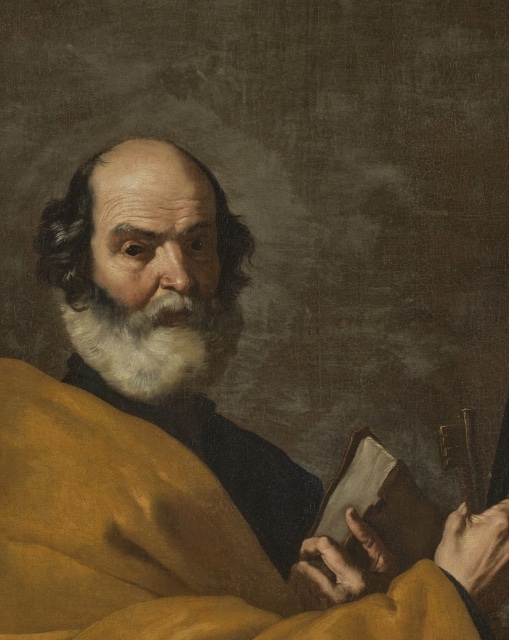The Prado Museum, in collaboration with Telefónica, has begun a bold initiative that seeks to take masterpieces of painting beyond the walls of the renowned museum. Under the name "The Art That Connects," this project aims to bring art closer to various Spanish communities, allowing emblematic works to reach a wider and more diverse audience.
On this occasion, the city of Albacete has been chosen to receive the work "Saint Peter" by the notable painter José de Ribera. The piece, a striking representation of the apostle, is now on display at the Museo de Albacete, where it will remain until November 3, 2024. This presence promises not only to enrich the region's cultural landscape, but also to offer its inhabitants the opportunity to interact directly with a jewel of Baroque art.
The painting stands out for its characteristic portrayal of the Apostle Peter, depicted with his traditional keys, but also with the unexpected element of a book, rarely associated with his iconography. Ribera, known for his distinctive depictions of holiness, manages to sublimate these elements in a work that is considered fundamental to his artistic career.
This effort is not the only one in the arsenal of initiatives that seek to democratize access to art. The proposal takes place within the framework of Telefónica's centennial celebration, uniting art and connectivity in an innovative perspective that aims to emphasize culture as a social bond. Throughout this program, eighteen Spanish localities will have the honor of receiving works by eminent masters such as Velázquez, Goya, Rubens and Murillo, evidencing a commitment to the fusion of art and community.
"The art that connects" does not arise in a vacuum. It draws inspiration from the historic path marked by the Prado Museum with its prior program “De Gira por España,” which kicked off in 2019 on the occasion of its Bicentennial. That initiative succeeded in bringing art to areas less accustomed to having direct access to such masterpieces, and has already benefited nearly forty communities.
Ribera's arrival in Albacete reaffirms the Prado Museum's role as a driving force in culture with national reach, supported by Telefónica's innovative vision. Together, they continue to build cultural bridges, making the country's artistic wealth tangible for those who, for geographical reasons, might not undertake the trip to the Prado. This is, without a doubt, an experience that transforms the relationship with art, enhancing the sense of belonging and cultural pride in every locality reached.



